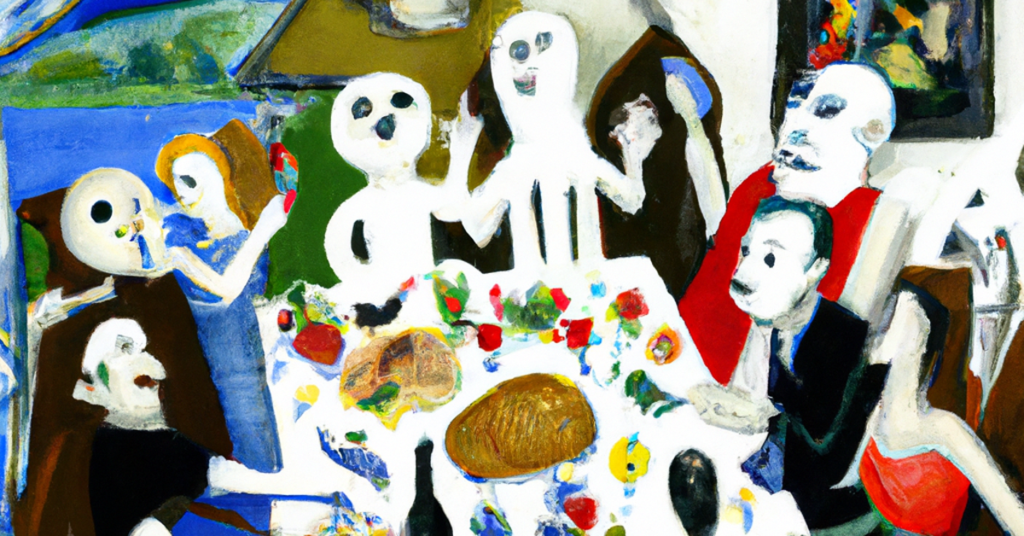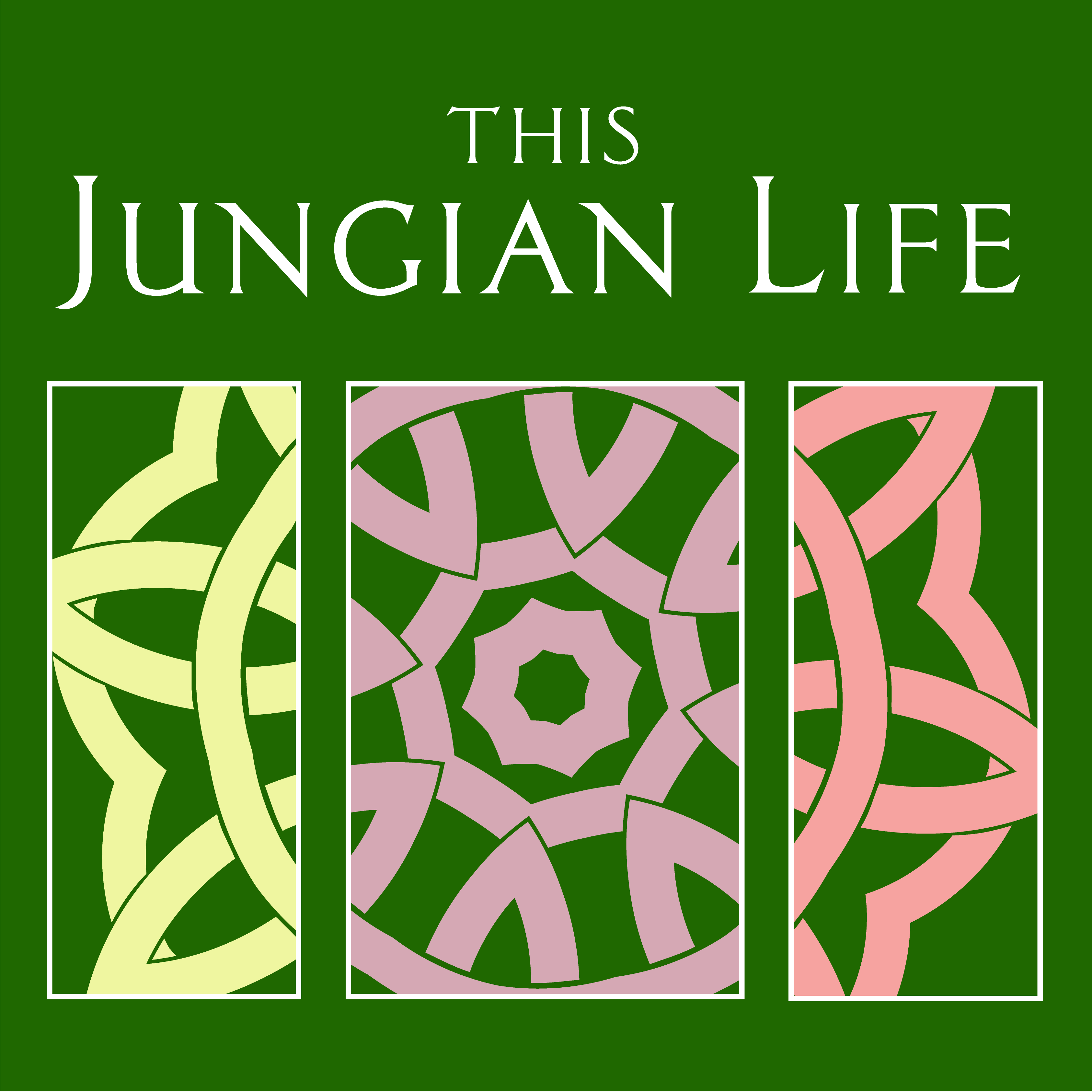
Holiday homecomings kindle hopes of achieving a domestic ideal, though family gatherings are also likely to evoke old roles and emotions. Families open a portal into the patterns of the past, and unfinished business can cause repetition of disappointing dynamics as if one more replay will yield a different outcome. John Gottman, renowned interactive researcher, states that authentic relationships have more positive than negative interactions, creating an emotional bank account to draw on when difficulties arise. If relational deposits are low, it may be time to face the disappointing reality of what should have been and may never be. It’s time to start something new. We can engage the task of making a home within instead of seeking it from others. When we are at home with ourselves, we are free to enjoy relationships for what they have to offer.
Complicated family dynamics are not modern affectations but part of the original fabric of human psyche. Fairy tales offer a wellspring of archetypal images that capture elements of collective experience curated over thousands of years. These stories help define universal problems and offer attitudinal solutions. For example, Nordic tales frequently include trolls that embody unrestrained primal instincts that disrupt the peace, make uncivilized demands, and once sated, return to the wilderness, often with a promise to return. The Norwegian tale, The Cat on the Dovrefell, helps us understand how we collude with disruptive holiday dynamics and what might be required to keep them at bay.
From the ancient wellspring of fairytales to the insightful observations of current researchers, one thing remains constant – challenging dynamics constellate when families gather for the holidays, requiring accurate recognition and skillful intervention. With this in hand, we might artfully disrupt old family patterns and bring forward the warm experiences of love and connection we hope for.
Here’s the dream we analyze:
“It’s nighttime, and I’m at the airport with my mom, in line for security. I have my cat with me, and as I’m about to go through security with him, I suddenly realize we are outside on the tarmac. I’m worried about pulling him out of his carrier because I know that if he escapes my arms, I’ll never find him out there. I can’t bear to lose him; the thought fills me with dread, and I start to panic. Upon seeing this, the TSA worker lets me keep him in his carrier. I get through and get on my flight. Upon landing, I find myself in Berlin. I make my way to the hotel, where I meet up with several friends. We are all tired from traveling, and it’s snowy out, so we decide to stay at the hotel and rest before exploring the city. We head to the pool, where the bar is very crowded with old people. One of my friends decides to go swimming, even though it’s very cold out. She plunges in, and a hotel employee scolds her, telling her it’s too cold, and she must get out. She doesn’t listen. More of my friends have arrived and are now also jumping into the pool. I stand at the edge, looking down at the water, unsure if I want to go in. Suddenly, an impulse takes over, and I need to feel the cold water on my body. I realize at this moment that I have a migraine, and I know the shock of the cold will heal it. I jump in and am surprised by how deep the pool is. I’m underwater a lot longer than I thought I’d be. When I resurface, I suddenly remember that my cat and my ex’s cat are in my hotel room, and I’m struck with a need to go check on them. I couldn’t bear to lose them and need to make sure they’re okay. Back in my hotel room, I find the cats are safe, and I also discover that my ex is in the room like he’s been waiting up there for me. I get into the bed, which is large and has a fluffy white comforter, and he joins. I am suddenly nervous as I realize we haven’t shared a bed in months, and I’m not sure what to do. But we quickly fall into place, and he’s holding me tight. It feels secure and warm, and we fall asleep like that. When I awake, we are back in our hometown together.”
REFERENCES:
John Gottman. The Relationship Cure. https://a.co/d/6vj3fUj
GIVE US A HAND!
Hey folks,
We need your help. Please become our patron and keep This Jungian Life podcast up and running: https://www.patreon.com/ThisJungianLife
JUMP IN THE POOL – THE WATER’S FINE!
We’ve created Dream School to teach others how to work with their dreams. A vibrant community has constellated around this mission, and we think you’ll love it. Check it out: https://thisjungianlife.com/enroll/
RESOURCES:
Facebook: https://www.facebook.com/ThisJungianLife/
Instagram: https://www.instagram.com/thisjungianlifepodcast/
LinkedIn: https://www.linkedin.com/in/thisjungianlife/
Twitter: https://twitter.com/ThisJungianLife
YouTube: https://www.youtube.com/channel/UCe8QSBLNlv765pT097FDeLA
Enroll in the Philadelphia Jungian Seminar and start your journey to becoming an analyst: https://www.cgjungphiladelphia.org/seminar.shtml

Love your painting Joseph!
Aww, thanks. I’m learning to create digital images with AI support – feels strange but seems to work.
Inspired by Chris McDonell’s comment on the podcast with Matthew Quick, I re-read after many years Robertson Davies’s “The Manticore” about a Jungian analysis in Zürich, and I found this passage, so fitting for this podcast combining trolls and spooks. The excerpt:
Analyst: … [Your father] may prove to be your Great Troll…
Patient: Why do you talk of trolls? It seems to me that you Jungians sometimes go out of your way to make yourselves absurd.
A: Trolls are not Jungian; they are just part of my promise not to annoy you with jargon. What is a troll?
P: A kind of Scandinavian spook, isn’t it?
A: Yes, spook is a very good word for it – another Scandinavian word. Sometimes a troublesome goblin, sometimes a huge, embracing lubberfiend, sometimes an ugly animal creature, sometimes a helper and server, even a lonely enchantress, a true Princess from Far Away; but never a full or complete human being. And the battle with trolls that Ibsen wrote about is a good metaphor to describe the wrestling and wrangling we go through when the archetypes we carry in ourselves seem to be embodied in people we have to deal with in daily life.
P: But people are people, not trolls or archetypes.
A: Yes, and our great task is to see people as people and not clouded by archetypes we carry about with us, looking for a peg to hang them on.
P: Is that the task we are working at here?
A: Part of it. We take a good look at your life, and we try to lift the archetypes off the pegs and see the people who have been obscured by them.
P: And what do I get out of that?
A: That depends on you. For one thing, you will probably learn to recognize a spook when you see one, and keep trolls in good order. And you will recover all these projections which you have visited on other people like a magic lantern projecting a slide on a screen. When you stop doing that you are stronger, more independent. You have more mental energy. Think about it.
!
PS The Ibsen quote from Peer Gynt:
To live is to war with trolls in heart and soul.
To write is to sit in judgement on oneself.